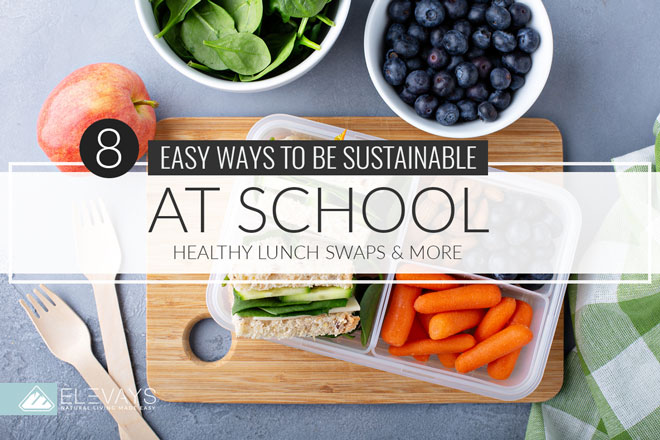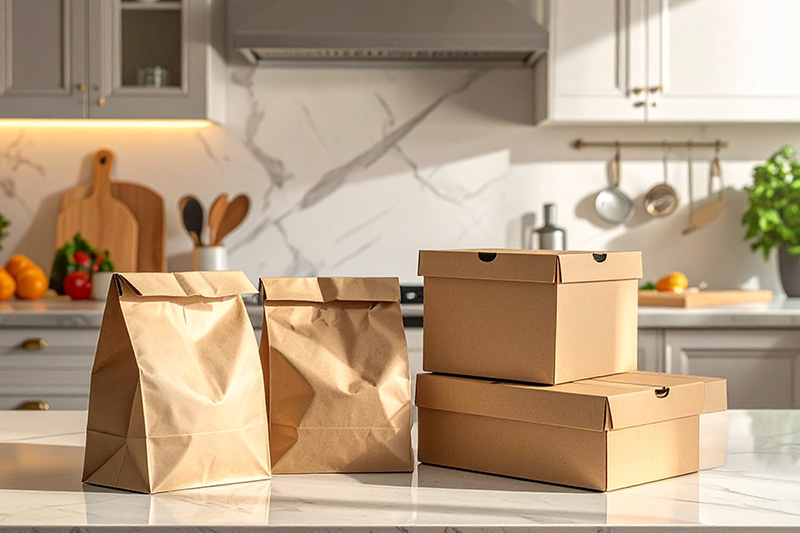Sustainability seems to be the talk of the town these days. And by “town” I mean “world.” And you better believe that it’s going to be the talk of 6th grade science class. With the school year now in full gear, you’re back to giving wake up calls, packing lunches and trying to remember how to do math without a calculator. You are just as involved in school as your kids are, and that means learning new things, re-learning old things, and being an A+ role model.
So, when your school-goer comes home with a deck of flashcards, you will be responsible for learning them as well–and here’s what ‘sustainable’ will say:
Sustainable (adjective)
TRUTH BOMB:
You’re
Already killing it!
If You Were More Consistent With Your Wellness Routine, You’d Be Unstoppable.
sus·tain·able | \ sə-ˈstā-nə-bəl \
- Capable of being sustained
- Of, relating to, or being a method of harvesting or using a resource so that the resource is not depleted or permanently damaged a. Sustainable techniques
- b. Sustainable agriculture
- Of or relating to a lifestyle involving the use of sustainable methods a. Sustainable society
Being sustainable at school means continuing the eco-friendly lifestyle you lead at home, at school. It’s helping your little one become a pioneer in the generation that is going to make the biggest difference.
It can be hard sticking to sustainability when sending your student off to school. There will be the days when you have no time to pack a lunch and your little one goes through the lunch line, buys a juice with a plastic straw attached and an ice cream sandwich wrapped in plastic that he promised you he wouldn’t get.
I’m not saying this is terrible all the time, to be honest, one of my fondest memories of my childhood was going through the cafeteria line. So, instead of making sustainability at school seem like an impossible feat, I’m going to offer 8 tips on how to go-green at school without going crazy.
8 Easy Ways To Be Sustainable At School
Recycled Notebooks
Boost Productivity, Retain Information, and Go-Green with Recycled Notebooks
Let’s start with the most obvious: paper. While a lot of schools are now incorporating laptops and tablets in the classroom, there is nothing like good ole’ pen and paper. Studies show that handwriting is more effective at retaining information and comprehending ideas, with the added bonus of eliminating distractions that come with the world wide web.
Researchers from Princeton University and UCLA discovered that typers often transcribe lectures verbatim rather than reframing and summarizing them into their own words to capture key components. Handwriting allows information to be literally “etched” into your brain (1).
When reaching for a pen and paper, make sure the paper is always recycled. Eco-friendly notebooks are perfect for the classroom (and even the office). Choosing recycled notebooks won’t only guarantee your student a better memory but also your world a more sustainable option.
Plastic Free Lunch Boxes
Keep it Eco-Friendly & Fresh
Lunch boxes are king in my book. Not only will they save TONS of plastic bags and paper bags, lunch boxes will also keep your kids’ sammies soggy-free, salads crisp, and after-school snacks fresh.
But here’s the thing, if you’re still in the market for a lunch bag—make sure you don’t just choose any old one you find on amazon. Always look for plastic-free, bleach-free, and toxic dye-free. That is the number one way to make sure you check all the sustainability boxes.
Supporting lunch box companies that use toxic materials isn’t sustainable. Eventually, that lunch bag will end up in a landfill or ocean where all those toxins will go right back into our earth.
This plastic-free lunch bag (my fav) is the perfect size for multiple containers and utensils. It also makes for an easy clean-up with a certified organic cotton lining that can be snapped out for laundry day. What is better than that? Easier on you, easier on the earth.
Bee’s Wrap
Washable, Reusable, Compostable, & Non-Toxic
So now that you’ve got a plastic-free lunch bag, let’s get started with packing a plastic-free lunch. The easiest way to break-up with Ziploc baggies, plastic wrap, and aluminum foil is by starting a long-lasting relationship with Bee’s Wrap.
Before I get into why I am obsessed with Bee’s Wrap, let’s talk about why I am SO over the old stuff.
Products like Ziploc, plastic wrap, and aluminum foil leach chemicals into the food we eat. These chemicals are known dioxins (aka cancer-causing chemicals) and endocrine disruptors (aka hormone imposters).
The most common chemical compounds found in these products are BPA and phthalates.
Here’s why our bodies’ physical sustainability depends on ditching these chemicals:
BPA and Phthalates are associated with:
- Embryo defects
- Male and female infertility
- Increased risk for breast cancer
- Decreased sex hormones in infants
- Insulin resistance
- Hormone disruption
- Obesity
Why plastics are even worse for our earth:
- More than 40% of plastic is used just once
- There are 6.4 billion tons of waste piling up on beaches and floating in the oceans
- Toxins in plastics break down, end up in marine life, and ultimately end up in our bodies
- Plastic has adversely affected almost 700 species, including endangered ones
- 1% of plastic bags are recycled and even most of those are improperly recycled- meaning they still end up in landfills where their toxins are carried by wind and water producing negative effects on humans and nature
(2)
Benefits of Bee’s Wrap
Wrapping your kids’ sandwiches and snacks in Bee’s Wrap is the easiest, most affordable, and sustainable alternative for school lunches. Not only are you preventing toxins from leaching into the food but you are also throwing out one less single-use plastic- and that is huge for our environment!
Bee’s Wrap is an infusion of organic cotton, organic jojoba oil, beeswax, and tree resin. It’s non-toxic, washable, reusable, and compostable- and an absolute must for staying sustainable at school.
Non-Toxic Containers
The Sustainable Option for Soups, Salads, & Snacks
Next up Tupperware. Tupperware has been the go-to, on-the-go container for years. But Tupperware is plastic and 100% NOT sustainable- but that should be no news to you.
We already talked about toxic leaching chemicals from plastic wrap and baggies, but did you know that Tupperware does the same thing?! And here’s the worst part. Most of us are sending food that is meant to be reheated in these tupperwares, leaching even more chemicals into your kids’ school lunches! This is why stainless steel containers are the most sustainable options when sending your student off with leftover soup or lasagna. Opt for silicone bowls for everything else. Packing lunch in these is your next step to a sustainable school year.
Reusable Cutlery Sets
From Single-Use to Sustainable
Straws get most of the bad rep for single-use plastic these days, and rightfully so. But most people don’t think about single-use cutlery. It’s easy to send our kids to school with those leftover cutlery packs we got from take-out the other night, but it’s not sustainable.
The sustainable alternative to single-use plastic cutlery is reusable, non-toxic cutlery. I love these bamboo kid cutlery sets because they are easy to clean and don’t hold food’s taste. They also come in a convenient carrying case made of recycled polyester.
Reusable cutlery will do wonders for Mama Earth’s sustainability– and they are easy and affordable alternative to plastic utensils.
Stainless Steel or Silicone Straws
Sustainable Sippin’
Send your kids off to school with colorful, fun, and eco-friendly straws. Straws are probably the most talked about single-use plastic problem. There are 500 million straws being used everyday in the United States alone! If you know baseball, that’s enough to fill the Yankee’s stadium five times over! (3)
But let’s be real, straws are fun and most people can’t/don’t want to sip without them. The most sustainable option is purchasing a silicone or stainless steel straw. For kids, I find that the silicone straws are better because they don’t clink teeth and are better for those who like to chew on straws.
Softy Straws are ideal for kids and straw-biters. They are made from BPA-free silicone and can be used in extreme temperatures, making them dishwasher safe and perfect for hot drinks.
Stainless Steel straws from Bunkoza are another one of my favorite plastic straw alternatives. They come in a handy pouch with a wool cleaner. I love these for sippin’ cold drinks and for being anywhere out and about.
Reusable Stainless Steel Water Bottles
Stay Hydrated & Save the Oceans, at the same time
What is more important than staying hydrated? Water helps our bodies perform at their very best. – At school, it’s crucial that your child stays hydrated- not only for brain health but overall health.
To drink the recommended amount of water needed at school and after-school sports requires a lot of plastic water bottles.
You probably know the impact that plastic water bottles have on the environment, I mean most of us do, but most of us continue to choose to ignore it because we don’t physically see the effects. We are beginning to feel the effects, though. Plastic water bottles are flooding landfills and covering the ocean. Not only that but every year the production of plastic water bottles requires approximately 17 million barrels of oil– the same amount of oil that can fuel one million cars for an entire year! And the manufacturing of a water bottle alone requires 3x the water needed to fill it! A more sustainable option should be a no-brainer here. Stainless steel bottles for kids are the easiest and most eco-friendly answer to stay hydrated and keep plastics out of our oceans.
Benefits of Stainless Steel Bottles:
- Free of BPA & other leaching chemicals
- Economically efficient
- Environmentally friendly
- Extremely durable & long-lasting
- Reduces waste
- Retains temperature
Other Ways to Stay Sustainable at School
There are even more ways to stay sustainable at school. If your child doesn’t take the bus, try carpooling with other classmates or commuting via bike, scooter, or feet! Whenever going school clothes shopping, try vintage shops or second-hand thrift stores. Not only does second-hand shopping encourage minimalism; it also inspires creativity and uniqueness. Lastly, if you have a girl at home, try introducing reusable pads, menstrual cups, or organic tampons. Not only are they a more sustainable option, but they are also 100x healthier for her growing body.
Now I want to hear from you, do you have any more ideas for sustainability at school? Are you already incorporating this into your school year?! Let me know in the comments below.
Sources:









Sharing this with wife.